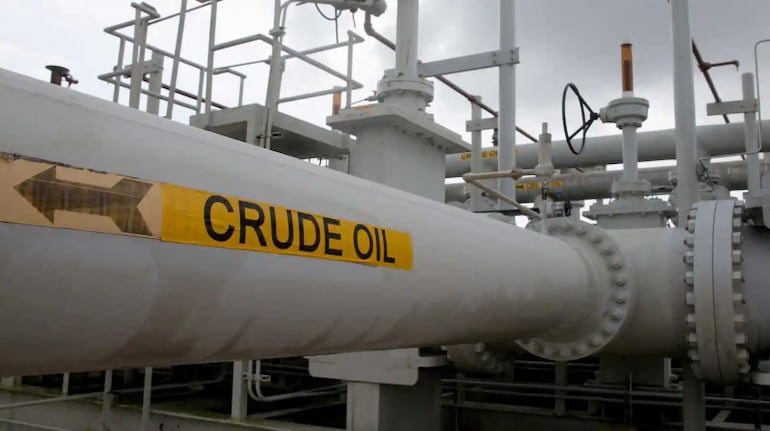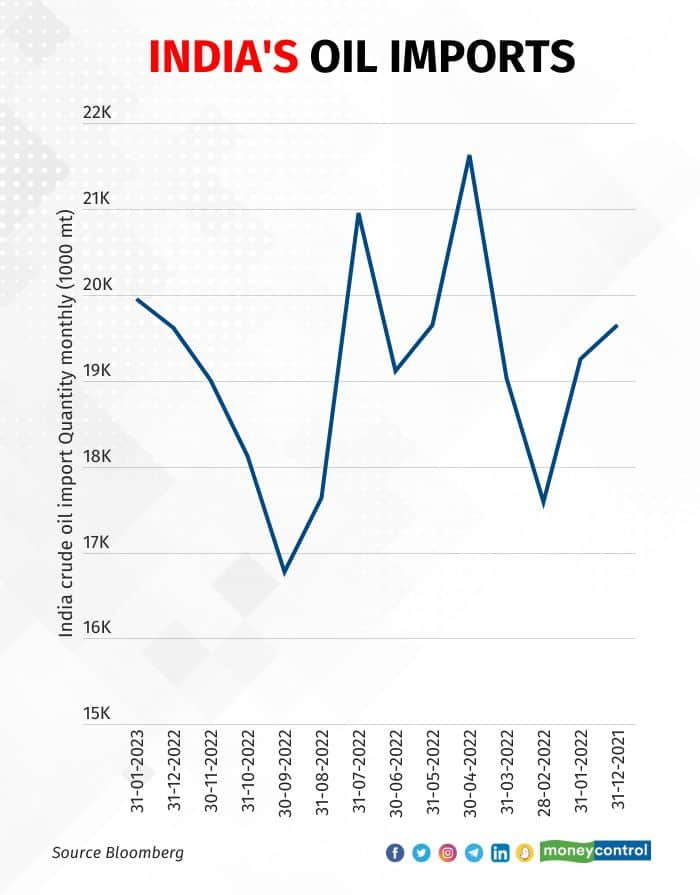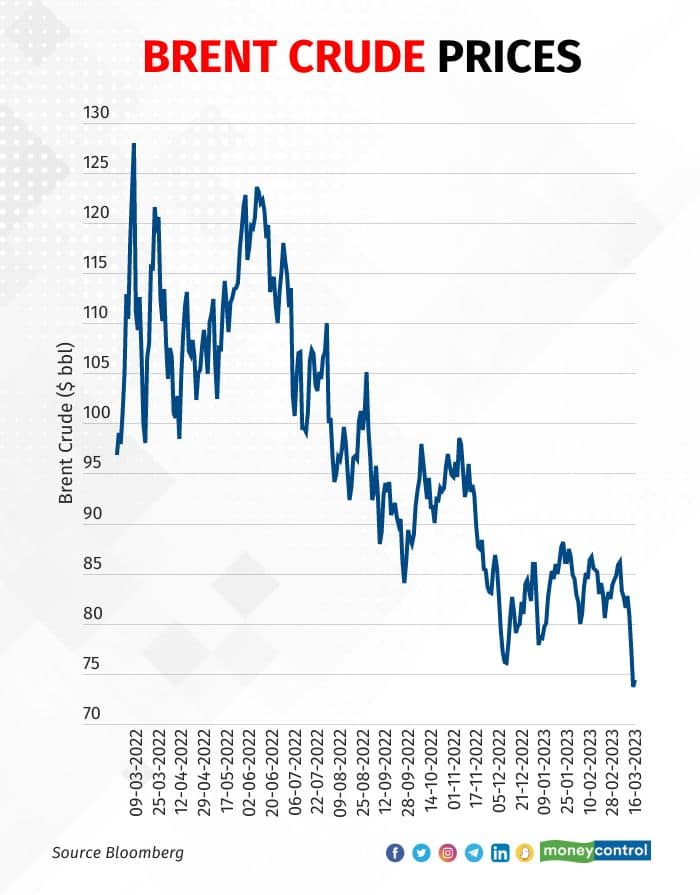



Billionaire Jean Paul Getty had a simple three-part advice for achieving success -- rise early, work hard, strike oil. True for individuals and economies alike.
While the Indian economy can do the first two tasks well, for the third component it is unfortunately dependent on the global market.
Which is why policymakers are paying close attention to the current turbulence roiling the crude oil segment.
Brent prices buckled below the $75-mark per barrel for the first time since 2021 as Credit Suisse became the latest financial major to be caught up in the crisis of confidence sweeping across the global markets, stirring up the ghosts of 2008.
ALSO READ: OMCs gain, ONGC, Oil India crack as crude falls below $75
Financial sector tensions have dealt a blow to oil demand outlook, compounding the challenges of post-Covid economic recovery bedeviled by inflation and rising interest rates.
However, this puts India in a macroeconomic sweet spot.
India is the world’s third largest oil consumer and importer, after China and the US. The country meets around 80 percent of its oil demand through overseas shipments.
Softening crude prices helps reduce India’s oil import bill, which nearly doubled to $119 billion for FY22 from $62.2 billion in the pandemic-hit 2020-21.

Lower oil prices also help narrow the current account deficit and consequently, takes pressure off the rupee.
ALSO READ: Crude comfort sends Asian Paints, Berger Paints rallying for second straight day
The current account deficit (difference between exports and imports of goods and services) and fiscal deficit are among the biggest pet peeves of market participants as well as global investors.
Outlining a path of fiscal prudence, Finance Minister Nirmala Sitharaman in the Union Budget for 2023-24 projected the fiscal deficit declining to 5.9% of gross domestic product (GDP) in FY24 from 6.4% in FY23
Benign oil rates also have a rub-off effect on containing inflation by keeping transportation fuel rates as well as gas prices in check.
This helps prop up the most critical cog in India’s growth machine – domestic consumer demand.
"… a slowing world — stemming from elevated inflation and aggressive rate hikes by major central banks — will create downside risks to India’s growth. Domestic demand, therefore, will have to do the heavy lifting next fiscal,” ratings agency Crisil said in its ‘India Outlook’ report released on March 15.
Consumer inflation is expected to moderate to 5 percent next fiscal from 6.8 percent this fiscal, thanks in part to a high-base effect.
On the sectoral front, end-user industries such as tyre and paint manufacturers, fast-moving consumer goods (FMCG) companies, carbon black and lubricant players and specialty chemicals firms – which are heavily reliant on crude oil and its derivatives -- can look forward to lowering their input costs.
After collapsing to historic lows at the onset of the Covid-19 pandemic, crude oil prices began firming up in tandem with demand returning as countries began lifting lockdown curbs.
In the first half of 2022, oil markets were jolted by the Ukraine war amid fears of supply disruptions and ramping up of Western sanctions on Russia – the third-biggest oil producer in the world.

However, deftly navigating the geopolitical tangles, India began snapping up discounted Russian oil.
From a market share of less than 1 percent before the Ukraine War in February 2022, Russia's share of India's oil imports surged to 1.62 million barrels per day (around 35 percent share) in February, eclipsing traditional suppliers Iraq and Saudi Arabia.
India’s thirst for oil has been rising steadily since the easing of COVID-19 restrictions.
Fuel sales soared to the highest levels in February, aided by robust demand from the agriculture and transport sectors, though the first half of March showed a slight dip with seasonal slowdown kicking in.
Petrol demand dipped 1.4 percent on an annual basis to 1.22 million tonnes in the first half of March, while that for diesel – the most consumed fuel in the country – slipped 10.2 percent to 3.18 million tonnes.
However, with the economy picking up momentum, the demand is only projected to rise.
And as long as crude oil prices continue to remain supportive, we can expect India’s growth engine to keep chugging along.
Discover the latest Business News, Sensex, and Nifty updates. Obtain Personal Finance insights, tax queries, and expert opinions on Moneycontrol or download the Moneycontrol App to stay updated!